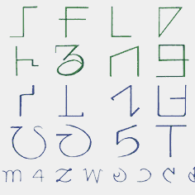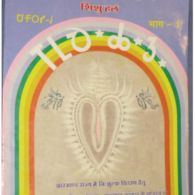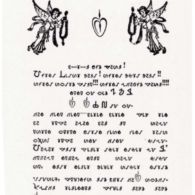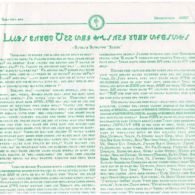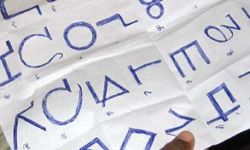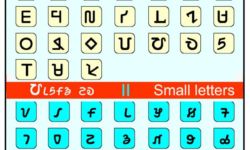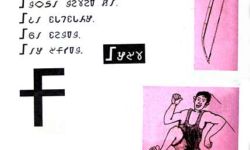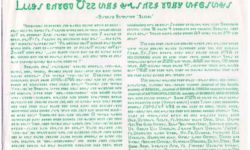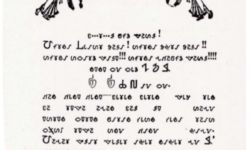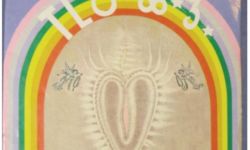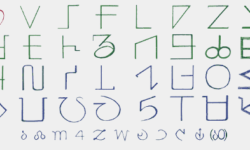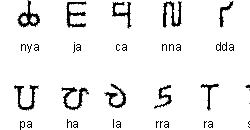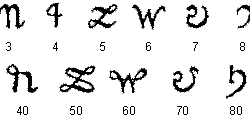Profile
The Warang Citi script (used for writing the Ho language spoken by roughly a million people, largely in the state of Jharkhand in eastern India) may be the only alphabet to begin with the letter Ong, or Om, the sound of the universe.It’s not used in orthography — it’s more like a short prayer or gesture of respect before heading into the mundane business of everyday writing.
The rest of the alphabet is also unusually rich. According to K. David Harrison of the Living Tongues Institute for Endangered Languages, “Each successive grapheme has a mythology that relates its shape, sound, or appearance to the unique Ho cultural context and worldview. This mythology serves as a mnemonic used in teaching and memorizing the Ho syllabary.”
Not surprisingly, the script has mystical and even mysterious roots.
In her article on indigenously-created graphic systems of India, Cécile Guillaume-Pey explains that among Adivasi (the word is equivalent to First Nations) groups of Central India, several inventions follow or are linked to the emergence of socio-religious and reformist movements.
Citing the research of Marine Carrin, she writes: “Among the Ho in the 1950s in Bihar, Lako Bodra, born into a wealthy family, studied in a Catholic school, became a catechist and devised a script called the Varang kshiti. One night during a full moon, he discovered luminous letters inscribed on a memorial stone (sasan-diri) dedicated to his ancestors. The Ho prophet claimed that the alphabet he found had been in fact created in the thirteenth century by a shaman named Dhawan Turi, whose visions he revisited in his own dreams…. Lako Bodra consequently founded a religion that centres, in large part, upon tribal deities. Inspired by his books, his disciples elaborated rituals aimed at gathering Ho people around the sarna or ‘sacred grove’, a religious space shared by Munda-speaking tribal groups in central India….”
Warang Citi remains very much a minority script even among the Ho (who, as a Scheduled Tribe, are some of the poorest people in India), many of whom don’t write their language in any form, many of whom prefer the standard Devanagari script.
In the last few years, Warang Citi has benefited from an unusually far-sighted multilingual education program that supports linguistic diversity in Jharkhand. (See Ol Chiki.)
Another scholar reported, “The Ho orthography is rapidly gaining a wider user base, despite lack of representation of the language in official media and in state schools. We have encountered, for example, a Ho blogger and Ho speakers who use ASCII characters to write Ho in e-mails.”
You can help support our research, education and advocacy work. Please consider making a donation today.
Links
General Script, Language, and Culture Resources
- Omniglot
- Wikipedia
- Unicode (PDF)
- The Story of Ho Writing
- Warang Chiti Alphabet Video
- Wikipedia (Ho Language)
- Scriptsource
- Sisu Halam Warang Chiti
- Living Tongues Warang Chiti Unicode
- Online Warang Chiti Talking Dictionary Project PDF
- Ho-language talking dictionary, video of a teacher teaching the Warang Citi alphabet, and other resources by Swarthmore College Laboratory for Endangered Languages Research and Documentation
Community Resources
Font/Keyboard Resources
- Ho Language Fonts
- Disum Sans
- BoyoGagraiUnicode Regular
- Aksharamukha converter (helps convert Warang Citi to other writing systems)
- Warang Citi Unicode chart (particularly useful for typeface designers)
- Ho-language talking dictionary, video of a teacher teaching the Warang Citi alphabet, and other resources by Swarthmore College Laboratory for Endangered Languages Research and Documentation
- Fonts and digital resources
- Warang Citi Unicode chart (PDF)
- Aksharamukha converter (helps convert Warang Citi ↔ other writing systems)
- BoyoGagraiUnicode Regular Font
